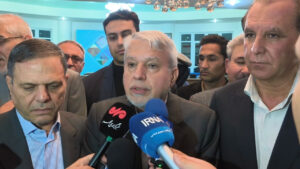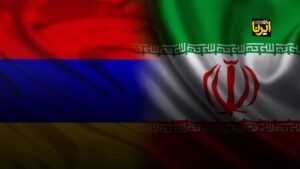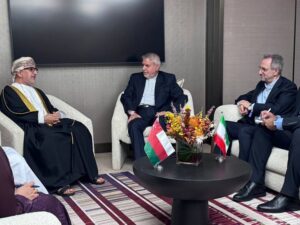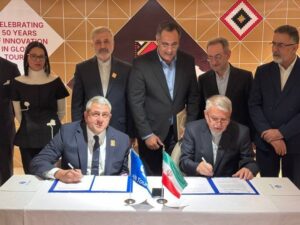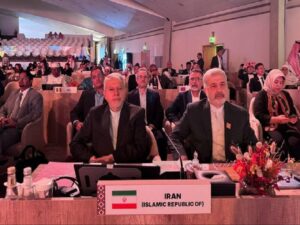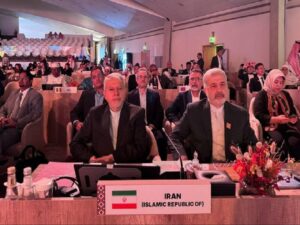West Azarbaijan Province, with its pristine nature, ancient history, cultural richness, and climatic diversity, is recognized as one of the key tourism destinations in the country. However, its investment capacities have yet to be fully realized.
Eco-lodging
The presence of mountainous areas, forests, waterfalls, and wetlands — particularly in the cities of Sardasht, Piranshahr, and Naqadeh — offers a unique opportunity for establishing ecolodges, nature tours, and mountain camping sites. Investors can capitalize on local human resources and traditional lifestyles to initiate sustainable and profitable tourism projects.
Historical, cultural tourism
The presence of UNESCO-registered sites such as St. Thaddeus Church, Sassanid petroglyphs in Bukan, and the historic fabric of Urmia makes this province one of the richest regions in historical tourism. Investment in conservation, restoration, and converting historic buildings into accommodations or cultural centers can be both economically beneficial and instrumental in preserving cultural heritage.
Health tourism
Mineral hot springs in areas like Chaldoran, Khoy, and Shut possess significant potential for developing spa complexes, massage therapy centers, and traditional medicine clinics. Due to the increasing domestic and regional demand for natural healthcare services, investment in this sector can yield good returns.
Sports tourism
The Khoshaku Ski Resort near Urmia, with ongoing development of accommodation, training, and recreational infrastructure, has the potential to become the winter tourism hub of the northwest region of the country. Building mid-range hotels, sporting equipment shops, and expanding transportation lines represent promising investment opportunities.
Investment
The Director General of the Cultural Heritage, Tourism, and Handicrafts Organization of West Azarbaijan Province highlighted the extensive and diverse tourism capacities of the region, stating, “West Azarbaijan Province, as one of the unique tourism destinations in the country, possesses remarkable potential to attract investors.” Morteza Safari emphasized that the province hosts five UNESCO World Heritage sites— including St. Thaddeus Church (Qara Kelisa), Takht-e Soleyman, Chapel of Dzordzo, and Shah Abbasi Caravanserai of Khoy— as well as more than 1,800 nationally registered sites. This rich collection offers unparalleled potential for developing the tourism industry in the area.
He described West Azarbaijan Province as “the paradise of Iran” and “the rainbow of ethnicities,” stating, “More than 80% of the country’s natural attractions, including waterfalls, springs, hot springs, mountains, dams, lakes, and even deserts, are located in this province.” The southern part of the province, with attractions such as Shalmash Waterfall, Kani Gravan Spring, Sardasht Dam, and Zab River, is recognized as a major eco-tourism hub.
Emphasizing that the diversity of ethnicities and religions enriches the cultural fabric, he added, “This variety in customs, local foods, and traditions is very attractive and noteworthy for tourists.” Safari regarded the tourism industry as an interdisciplinary sector and stated, “Achieving tourism development requires comprehensive cooperation among all institutions and strengthening infrastructure such as access roads, rail, and air transportation. Unfortunately, some sectors face weaknesses that need serious attention.”
According to him, currently more than 200 accommodation units with a capacity of around 7,000 people operate in the province, and efforts are underway to increase this capacity through attracting further investment. He identified health tourism as a significant investment opportunity, noting, “Using hot springs and mineral springs, along with providing advanced medical services through equipped clinics and hospitals with skilled doctors, is highly attractive to foreign patients. The province has more than 50 active springs, many of which already have tourism infrastructure.”
Safari also referred to the province’s potential in winter tourism, citing Silvaneh region and Khoshaku Ski Resort as key destinations during the cold season. He pointed out that bureaucratic delays and lengthy permit processes remain major obstacles to attracting investments. He expressed hope that, with the spirit of the current year’s slogan and the government’s efforts to streamline procedures, conditions for investors will improve.
A promising future
He also highlighted the multiple capacities of the province in agricultural tourism, rural tourism, historical, religious, aquatic, and cross-border market shopping tourism. “Tourism routes and information about attractions, accommodation, and recreational centers in the province are accessible to tourists through internet websites,” he noted. Safari emphasized the vital role of the private sector in advancing the tourism industry, stating, “The government’s duty is oversight and support, but the engine of development operates through the active involvement of the private sector. Fortunately, investor interest in entering the tourism sector is growing, and the future of this industry in West Azarbaijan appears bright and promising.”
Given its unique geographical position, climatic diversity, rich historical and cultural background, and proximity to international borders, West Azarbaijan Province stands out as one of Iran’s most promising regions for tourism investment. Smart utilization of these opportunities can not only contribute to the province’s economic development but also play a crucial role in reinforcing its cultural and environmental identity.

